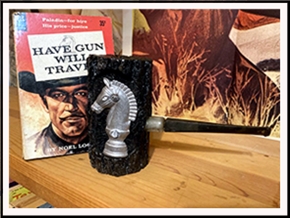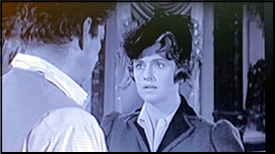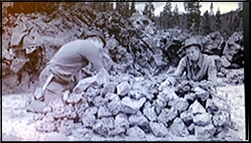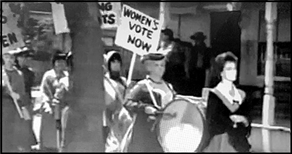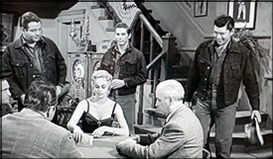Sat 7 Oct 2023
A TV Western Episode Review: BLACK SADDLE “Client Meade†(1959).
Posted by Steve under Reviews , TV Westerns[6] Comments

BLACK SADDLE “Client Meade.†NBC, Four Star Productions. 17 January 1959 (Season One, Episode Two). Peter Breck (Clay Culhane), Russell Johnson (Marshal Gib Scott), Anna Lisa (Nora Travers). Guest Cast: Clu Gulager (Andy Meade), Ned Glass. Director: Roger Kay. Currently streaming on YouTube (see below).
The premise of this TV western series that ran for two seasons, the first for NBC, the second on ABC (*) was that when gunslinger Clay Culhane quit his gunslingers ways he turned instead to practicing law. There was more to his backstory than this, but all that was presumably covered in the first episode of season one. This is the second.
Not yet having watched the first episode, I do not know the significance of his black saddle. Other than a carry over from his more wayward way of making a living, perhaps there was none. And of course even though he is now a lawyer, there are times when his guns are needed.

Clay’s client in this one is Andy Meade (Clu Gulager), a drifter who is handy with a gun who is followed into town by three men with vengeance is their eyes toward him, but when the oldest confronts him, the man dies. A witness could verify that it was self defense, and he does at first, but when it comes time for a hearing, frightened for his family, he changes his testimony.
This is the crux of the story, but for a tale that’s 30 minutes long, including time for commercials, there is a lot more action to come, including a break from jail, another shootout, and a recanting of the changed testimony, which comes too late for everyone to survive.

As for the players, I hesitate to suggest this, but I think Clu Gulager had more onscreen charisma than Peter Brock and Russell Johnson combined (none), but maybe that’s just me. Anna Lisa, as the woman behind the front desk of the hotel, had little to do in this one.
What this is, overall, as “adult†westerns on TV at the time so often were – and there surely were a lot of time – is a short little morality play. Don’t tell lies, and let the law be the guide. Done, and done, and most neatly so.

(*) Thanks to Mike Doran and his Comment #1 for the correction on this.

